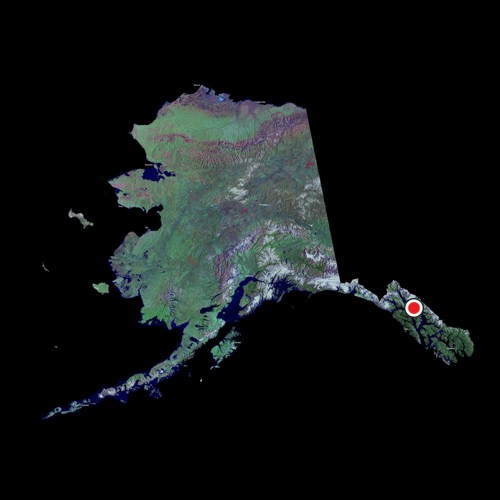
Alaska is home to the Poker Flat Research Range, where NASA researchers launch sounding rockets. A sounding rocket is a rocket that launches into Earth's atmosphere, collects information and comes back down to Earth—all in about 30 minutes.
Alaska is one of the best places in the US to see the aurora borealis, or "northern lights." Aurora happen when particles from the Sun interact with Earth's magnetic field and the gases in our atmosphere.
NASA researchers study the environment in Alaska to understand the impacts of Earth's changing climate. Information from the ground and from NASA satellites are used to understand changes, such as the thawing of permanently frozen ground.
NASA's Alaska Satellite Facility Distributed Active Archive Center is located at the University of Alaska, Fairbanks. This facility processes and stores information from some of NASA's Earth missions.
Companies in Alaska have also supported many NASA missions. For example, Alutiiq Advance Security Solutions, LLC of Anchorage, Alaska, supports the NASA Goddard Space Flight Center by providing protective services.
Profiles of NASA People From This State:
Anne Kahle, Geophysicist
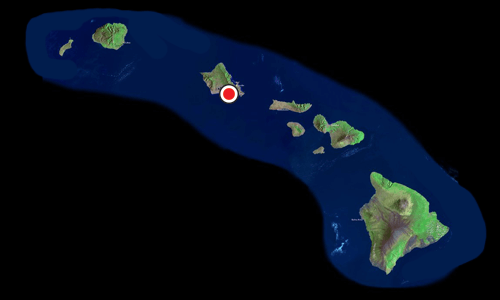
At least two NASA astronauts were born in Hawaii.
Astronaut names: K. Megan McArthur and Ellison Onizuka
Astronauts from NASA missions Apollo 13 through 17 trained for their moon missions on the lunar-like volcanic terrain on the Big Island of Hawaii.
A team of scientists led by NASA is studying Hawaiian volcanoes from the air, ground and space. These observations will help us better understand volcanoes and the hazards they present.
Hawaii is home to several large telescopes used by astronomers around the world. NASA scientists use information from these telescopes, and space telescopes such as the Spitzer Space Telescope and the Hubble Space Telescope, to learn more about our universe.
Hawaii companies also support many NASA missions. For example, Fantom Materials, Inc. a company in Hawaii, makes instruments that are used on NASA telescopes.

At least one NASA astronaut was born in Idaho.
Astronaut names: James F. Reilly
Idaho was in the path of totality, or prime viewing area, for the 2017 total solar eclipse.
Arco, Idaho is home to Craters of the Moon National Monument and Preserve. The park's cratered landscape was created by volcanoes over thousands of years. Decades ago, astronauts preparing for NASA's Apollo 14 mission trained here to better understand the Moon's geology. More recently, NASA scientists have studied the craters to better understand how volcanoes work here on Earth and elsewhere in our solar system.
Idaho National Laboratory built the power source, a radioisotopic thermoelectric generator, used on NASA's New Horizons mission to Pluto and NASA's Perseverance rover.
Researchers and students at colleges and universities in Idaho support NASA missions. For example, scientists from Idaho State University and NASA worked together on lava flow research that could help scientists find life on other planets and land rovers more safely on Mars.
Profiles of NASA People From This State:
Brian Lewis, Systems Engineer

At least one NASA astronaut was born in Montana.
Astronaut names: Loren Acton
Montana was in the path of totality, or prime viewing area, for the 2017 total solar eclipse.
Researchers and students at colleges and universities in Montana support NASA discoveries. For example, scientists from Montana State University partnered with NASA's IRIS mission to study the Sun. IRIS, short for Interface Region Imaging Spectrograph, launched in 2013 to study how material moves through the Sun's lower atmosphere.
Montana companies also support many NASA missions. For example, Resonon, Inc. makes tools that are used for NASA's low Earth orbit, Earth-viewing instruments.
Profiles of NASA People From This State:
Brent Buffington, Mission Design Manager

In 2012, the Desert Research Institute in Nevada collaborated with NASA researchers to discover ancient microbes—tiny living organisms—in an Antarctic lake.
Researchers and students at colleges and universities in Nevada support NASA discoveries. For example, scientists from the University of Nevada, Reno work with NASA's Airborne Snow Observatory to improve how we measure the amount of snow that is covering Earth.
Nevada companies also support NASA research. For example, NASA collaborates with the Reno-Tahoe Airport Authority to do testing with drones—a type of uncrewed aircraft—in Reno, Nevada. The testing will help researchers figure out ways to safely coordinate air traffic that includes drones and airplanes.

At least three NASA astronauts were born in Oregon.
Astronaut names: James Dutton, S. David Griggs and Donald Pettit
Oregon was in the path of totality, or prime viewing area, for the 2017 total solar eclipse.
Researchers and students at colleges and universities in Oregon support NASA discoveries. For example, scientists from Oregon State University developed a sensor that can observe Earth's coastal areas to analyze human impacts and the effects of climate change. The sensor was used on board the International Space Station.
Oregon companies also support NASA discoveries. For example, NASA collaborates with The Innovation Laboratory, Inc. of Oregon to design technologies to assist with NASA oceanic discoveries.
Profiles of NASA People From This State:
Ian Brosnan, STEM Presidential Management Fellow
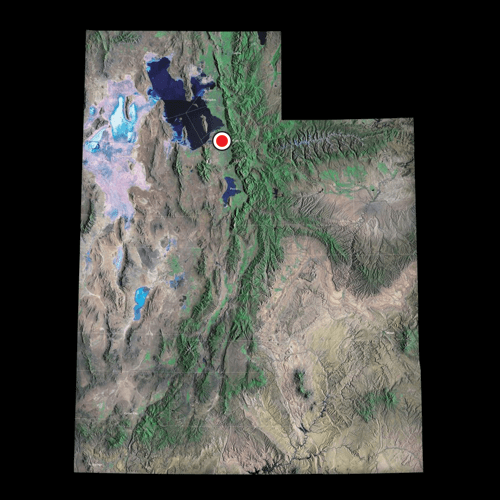
At least two NASA astronauts were born in Utah.
Astronaut names: Don L. Lind and Jake Garn
NASA's Stardust spacecraft was the first to ever bring comet dust samples back to Earth. In 2006, the capsule that contained the comet sample landed in the desert west of Salt Lake City, Utah.
The Colorado Basin River Forecast Center incorporates NASA data into its forecasting model to provide more information to the center to help manage Colorado Basin River's water supply.
Researchers and students at colleges and universities in Utah support NASA in many ways. For example, scientists from Utah State University developed cameras for NASA's OSIRIS-REx mission. OSIRIS-REx is studying and collecting samples from a near-Earth asteroid called Bennu, and the sample return capsule is set to land there!
Companies in Utah have also helped support NASA missions. For example, Promontory, Utah is where many NASA rockets—including the powerful Space Launch System—were tested by a company called Orbital ATK, which is now a part of Northrup Grumman.
Profiles of NASA People From This State:
Rula Coroneos, Research Aerospace Engineer

At least eight NASA astronauts were born in Washington.
Astronaut names: Kayla Barron, Michael Barratt, Bonnie Dunbar, Richard Gordon, Gregory Johnson, Anne McClain, Stephen Oswald and Dick Scobee
Researchers and students at colleges and universities in Washington support NASA missions. For example, scientists from the University of Washington use imagery from NASA's Aqua satellite to understand why glaciers in Greenland are melting more quickly today than they did a few decades ago.
Companies in Washington have also helped support NASA missions. For example, Aerojet Rocketdyne, Inc. is developing a more fuel-efficient way to fly robots—and one day, humans—to Mars.
Profiles of NASA People From This State:
Suzanne “Suzy” Dodd, Project Manager
Tanya Harrison, Planetary Scientist
Rob Manning, Systems Engineer
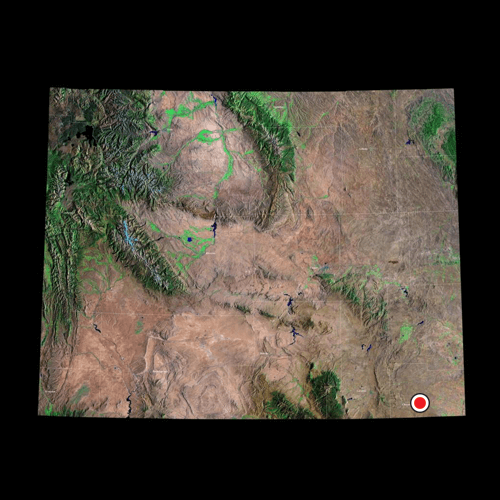
Wyoming was in the path of totality, or prime viewing area, for the 2017 total solar eclipse.
Scientists traveled to a mountaintop in Caspar, Wyoming during the 2017 total solar eclipse to study the Sun's atmosphere, called the corona. The research will help us understand how the Sun generates space weather, which can damage satellites in orbit around Earth.
Companies in Wyoming have also helped support NASA missions. For example, Thermosolv, LLC. in Wyoming works with NASA to develop new technologies to improve energy storage in NASA instruments.

At least two NASA astronauts were born in Arizona.
Astronaut names: Timothy Creamer and Steven Smith
Arizona is home to Meteor Crater, a meteorite impact crater that is 700 feet deep and 4,000 feet across. In the 1960s and 1970s, NASA astronauts trained in Meteor Crater to prepare for the Apollo missions to the Moon.
Astronomers travel from around the world to observe our universe using the telescopes at Kitt Peak National Observatory near Tuscon, Arizona.
NASA tested the Orion crew vehicle's entry, descent and landing parachutes high above the Arizona desert in preparation for the vehicle's orbital flight test.
Researchers and students at colleges and universities in Arizona work on many NASA missions. For example, OSIRIS-REx is a NASA mission traveling to an asteroid called Bennu, is a collaboration with the University of Arizona.
Also, NASA's Psyche mission is led by Arizona State University. The Psyche mission will study a unique metal asteroid that could be the leftover core of an early planet.
Arizona companies have helped make parts for many NASA spacecraft. For example, an Arizona company called Paragon Space Development Corporation, is working to develop a system to improve water recovery from the urine of astronauts aboard the International Space Station.
Profiles of NASA People From This State:
Phillips Davis, Web Editor/Curator
Kim Orr, Web Producer
Britney Schmidt, Astrobiologist
Neil Gehrels, Astrophysicist
Karly Pitman, Planetary Scientist and Astrophysicist

At least 25 NASA astronauts were born in California.
Astronaut names: Nicole A. Mann, Victor J. Glover, Tracy Caldwell-Dyson, Steven W. Lindsey, Jose Hernandez, Barbara Morgan, James van Hoften, Joseph M. Acaba, Frederick Sturckow, Frederick Hauck, Kevin P. Chilton, Ellen Ochoa, Sally Ride, John D. Olivas, Bryan D. O'Connor, Pamela Melroy, Alan G. Poindexter, Rex J. Walheim, Michael Coats, Stephen Robinson, Michael Clifford, Stanley G. Love, William C. McCool, Michael J. McCulley, John Young and Jonny Kim
Three NASA centers are located in California: NASA's Ames Research Center in Silicon Valley, NASA's Armstrong Flight Research Center on the western edge of the Mojave Desert and NASA's Jet Propulsion Laboratory in Southern California.
The retired NASA space shuttle Endeavour is on view for visitors at the California Science Center in Los Angeles.
The Deep Space Network is a collection of big radio antennas that operate in three different places on Earth. Scientists use these radio antennas to send and receive information from faraway spacecraft. One set of these antennas is in Goldstone, California.
Many NASA missions, such as Mars InSight, have launched from Vandenberg Air Force Base in California.
Researchers and students at colleges and universities in California work on many NASA missions. For example, researchers from the University of California Los Angeles will build an instrument for NASA's upcoming Psyche mission. Psyche will study a unique metal asteroid in the asteroid belt between Mars and Jupiter.
California companies also support many NASA missions. For example, SpaceX a company in California, makes some of the rockets used to launch supplies to the International Space Station.
Profiles of NASA People From This State:
Susan Callery, Earth Science Public Engagement Manager
Bobak Ferdowsi, Systems Engineer
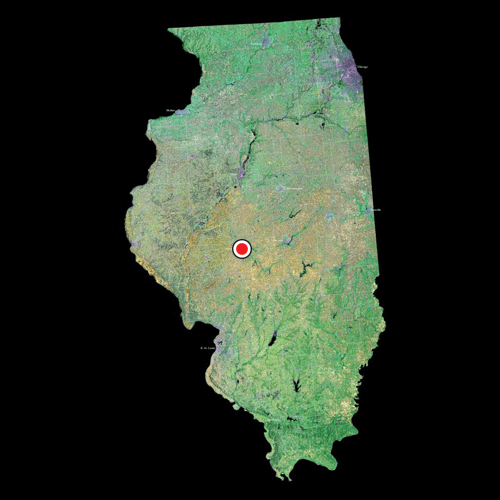
At least 15 NASA astronauts were born in Illinois.
Astronaut names: Zena Cardman, Sandra Magnus, Steven R. Nagel, Carl J. Meade, Gene Cernan, John M. Grunsfeld, Joan Higginbotham, Thomas Ken Mattingly, James McDivitt, Charles Veach, Joseph R. Tanner, Scott Altman, Lee Archambault, Joseph P. Kerwin and Gary Payton
Illinois is one of only three states that happen to be in the path of totality, or prime viewing area, for both the 2017 and 2024 solar eclipses!
Researchers and students at colleges and universities in Illinois support many NASA discoveries. For example, scientists from the University of Illinois at Chicago helped NASA to uncover a community of ancient microbes (bacteria) in Antarctica.
Illinois companies support NASA discoveries in many ways. For example, a company called Serionix is making color-changing filters to help spacesuits remove toxic chemicals from breathable air for future space travel.
Profiles of NASA People From This State:
Curt Niebur, Lead Program Scientist
Rachel Mastrapa, Research Scientist
Rachel Klima, Planetary Geologist and Senior Staff Scientist

At least 12 NASA astronauts were born in Indiana.
Astronaut names: Charles Walker, Joseph P. Allen, Jerry L. Ross, Frank Borman, Serena M. Auñón, Anthony W. England, David Wolf, Donald Williams, Virgil (Gus) Grissom, Kevin A. Ford, Janice E. Voss and Mark N. Brown
Indiana will be in the path of totality, or prime viewing area, for the 2024 total solar eclipse!
Researchers and students at colleges and universities in Indiana support many NASA discoveries. For example, engineers from Purdue University collaborated with NASA to develop a type of deep space small satellite.
Indiana companies have helped support many NASA discoveries. For example, a company called Exelis Space Systems, Inc. of Fort Wayne, Indiana makes the Cross-track Infrared Sounder (CrIS) instruments for NASA's Joint Polar Satellites System. This instrument will measure temperatures, water vapor and gases in our atmosphere.
Profiles of NASA People From This State:
William Patzert, Research Scientist
Joan Salute, Program Executive
Phillip Chamberlin, Research Astrophysicist
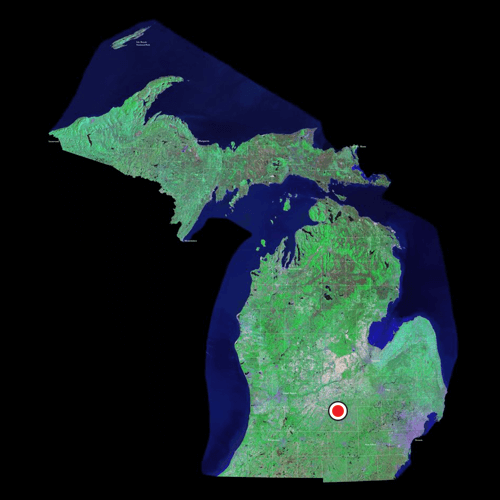
At least 12 NASA astronauts were born in Michigan.
Astronaut names: Christina Hammock Koch, Brewster H. Shaw, Dominic A. Antonelli, Gregory Jarvis, Jerry M. Linenger, Michael J. Bloomfield, Donald R. McMonagle, Roger B. Chaffee, Jack R. Lousma, Alfred Worden, Richard A. Searfoss, David Leestma and Brent W. Jett, Jr.
Michigan will be in the path of totality, or prime viewing area, for the 2024 total solar eclipse.
Researchers and students at colleges and universities in Michigan support many NASA discoveries. For example, the University of Michigan is a collaborator on NASA's CYGNSS mission, which aims to improve extreme weather prediction.
Michigan companies support NASA missions in many ways. For example, the Michigan Aerospace Corporation worked to improve a remote sensing technique called LIDAR that NASA satellites use to monitor Earth's surface.
Profiles of NASA People From This State:
Jim Bridenstine, NASA Administrator
Megan Elwood Madden, Professor of Geochemistry
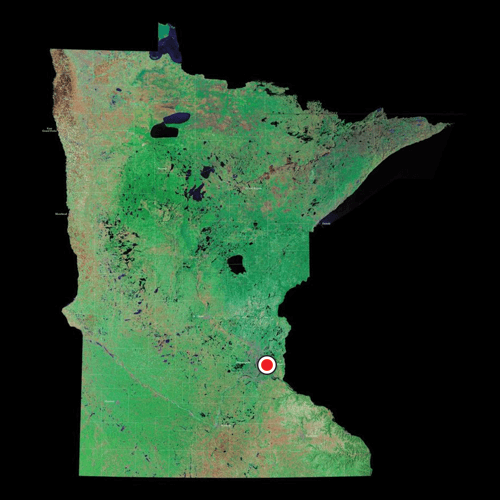
At least seven NASA astronauts were born in Minnesota.
Astronaut names: Dale Gardner, Josh A. Cassada, Robert D. Cabana, Karen L. Nyberg, Duane G. Carey, Heidemarie M. Stefanyshyn-Piper
Researchers and students at colleges and universities in Minnesota support many NASA discoveries. For example, a team from the University of Minnesota helped design scientific instruments on the Parker Solar Probe, which studies the Sun’s atmosphere.
Minnesota companies and organizations have helped to support NASA in many ways. For example, NASA partnered with the Science Museum of Minnesota to create an exhibit, videos and activities that will help other museums around the country tell the story of NASA's science research.
Profiles of NASA People From This State:
Sarah Noble, Planetary Geologist
Karen Yuen, Science Data Applications Lead
Steven Lee, Deputy Project Manager
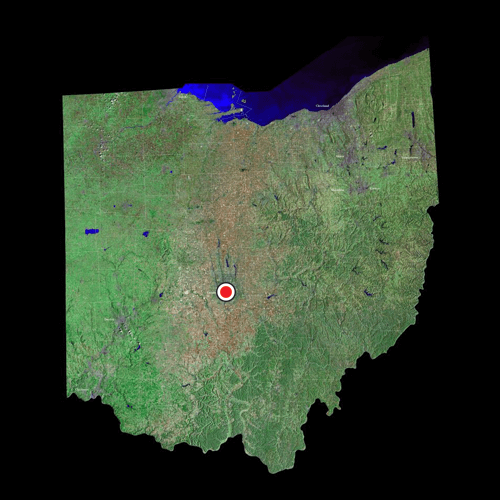
At least 21 NASA astronauts were born in Ohio.
Astronaut names: Judith Resnik, Terence T. Henricks, John Glenn, Karl Gordon Henize, Kenneth D. Cameron, Gregory J. Harbaugh, Jim Lovell, G. David Low, Donald A. Thomas, Carl Walz, Mary E. Weber, Donn F. Eisele, Michael Foreman, Charles Bassett, Sunita Williams, Robert F. Overmyer, Ronald Sega, Michael L. Gernhardt, Michael T. Good, Neil Armstrong and Ronald A. Parise
Cleveland, Ohio is home to NASA's Glenn Research Center.
Sandusky, Ohio is home to NASA's Plum Brook Station, which has large unique facilities that simulate the environment of space.
Ohio will be in the path of totality, or prime viewing area, for the 2024 total solar eclipse!
Researchers and students at colleges and universities in Ohio have supported many NASA discoveries. For example, researchers from the University of Dayton are working with NASA to develop and test the generator that will power the Mars 2020 rover.
Ohio companies have helped to support many NASA missions. For example, Eaton Corp., Timken Co. and Materion all made components for NASA's Curiosity rover on Mars.
Profiles of NASA People From This State:
Diana Blaney, Planetary Scientist
Marc Rayman, Mission Manager/Chief Engineer
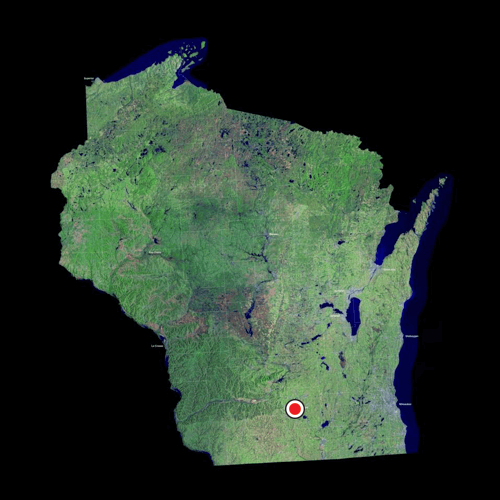
At least seven NASA astronauts were born in Wisconsin.
Astronaut names: Curt Michel, Leroy Chiao, Deke Slayton, Jeffrey Williams, Mark C. Lee and Daniel Brandenstein
A project called Snapshot Wisconsin combines photographs from Wisconsin residents and data from NASA's Aqua, Terra and Landsat satellites to help monitor the state's deer population.
Researchers and students at colleges and universities in Wisconsin have supported many NASA discoveries. For example, a NASA's Health and Air Quality Applied Sciences Team is led by scientists at the University of Wisconsin, Madison. This team uses data from NASA satellites to monitor chemicals in the air that could potentially be harmful to the environment and human health.
Wisconsin companies have helped to support NASA in many ways. For example, Amorim Cork Composites is providing the heat shield for NASA's Orion crew capsule. Cork is a material that can protect the capsule—and humans inside—from the heat that results from entering Earth's atmosphere.
Profiles of NASA People From This State:
Catharine “Cassie” Conley, Planetary Protection Officer
William Borucki, Science Principal Investigator
Michelle Thaller, Assistant Director of Science for Communications
Kevin DeBruin, Systems Engineer

At least six NASA astronauts were born in Connecticut.
Astronaut names: Kathleen Rubins, Pierre Thuot, Sherwood C. Spring, Daniel C. Burbank, Daniel T. Barry and Richard Mastracchio
Researchers and students at colleges and universities in Connecticut support many NASA discoveries. For example, astronomers from Yale University have helped NASA discover exoplanet Kepler-150 f, which is nearly the size of Neptune.
Connecticut companies support NASA in many ways. For example, multiple companies worked to help NASA build, test and fly the Ares I rocket.
Profiles of NASA People From This State:
Joan Stupik, Guidance and Control Engineer
Lynn Rothschild, Astrobiologist and Adjunct Professor of Molecular Biology, Cell Biology, and Biochemistry

At least one NASA astronaut was born in Delaware.
Astronaut names: Nancy Currie-Greg
Researchers and students at colleges and universities in Delaware support many NASA discoveries. For example, Delaware State University is home to the Optical Sciences Center for Applied Research (OSCAR). This center helps create new NASA-related developments based on optical sciences and technology.
Companies in Delaware have also supported NASA in many ways. For example, NASA partnered with W.L. Gore & Associates, Ltd., a company in Newark, Delaware, to help with the James Webb Space Telescope.

At least two NASA astronauts were born in Maine.
Astronaut names: Charles O. Hobaugh and Jessica U. Meir
Maine is set to be in the path of totality, or prime viewing area, for the upcoming 2024 total solar eclipse.
NASA's DC-8 airborne science laboratory flew out of Bangor, Maine. This laboratory supports the Global Precipitation Mission (GPM) satellite, which measures snowfall from space.
Researchers and students at colleges and universities in Maine support many NASA discoveries. For example, a University of Maine doctoral student is a collaborator on testing NASA's Hypersonic Inflatable Aerodynamic Decelerator (HIAD) which attaches to the nose of a spacecraft and inflates to slow its landing. This ensures a safer landing.
Maine also supports NASA missions in many other ways. For example, Maine's Brunswick Naval Air Station U.S. Navy members served as instructors for survival training for the 2004 NASA astronaut class.

At least seven NASA astronauts were born in Maryland.
Astronaut names: Robert Curbeam Jr., Marsha Ivins, Thomas David Jones, Terry W. Virts, Gregory R. Wiseman, Richard R. Arnold, Kenneth S. Reightler, Jr.
Greenbelt, Maryland is home to NASA's Goddard Space Flight Center.
Researchers and students at colleges and universities in Maryland support many NASA discoveries. For example, NASA and the University of Maryland, College Park have collaborated to form a data and research center called Center for Research and Exploration in Space Science and Technology (CRESST).
The Johns Hopkins University Applied Physics Laboratory in Laurel, Maryland, supports several NASA missions, such as the Parker Solar Probe mission to the Sun and the New Horizons mission to Pluto.
Maryland companies and organizations have helped to support NASA in many ways. For example, NASA partnered with URS Federal Services Inc. of Germantown, Maryland to assist with operations at NASA's Marshall Space Flight Center in Huntsville, Alabama.
Profiles of NASA People From This State:
Ashley Stroupe, Robotics Software Engineer

At least 14 NASA astronauts were born in Massachusetts.
Astronaut names: Scott D. Tingle, Brian Duffy, Christa McAuliffe, Bruce McCandless II, Story Musgrave, Brian O'Leary, Albert Sacco, Stephanie Wilson, Stephen G. Bowen, Richard M. Linnehan, Christopher Cassidy, Jerome Apt, Ed Lu and Charles J. Precourt
A NASA expedition on ocean salinity called the Salinity Processes in the Upper Ocean Region Study (SPUR) took place at the Woods Hole Oceanographic Institute in Massachusetts.
Worcester, Massachusetts is home to the birthplace of Dr. Robert H. Goddard who is considered to be the father of modern rocket propulsion.
Researchers and students at colleges and universities in Massachusetts have supported many NASA discoveries. For example, researchers from the Massachusetts Institute of Technology (MIT) and Northeastern University are working with NASA to help develop and test robots, such as NASA's Valkyrie R5 Robot.
Massachusetts companies support NASA in many ways. For example, equipment at Massachusetts General Hospital was used to test a sensor for a weather satellite (NOAA's GOES-S). The test was used to help replicate the harsh environment the satellite would encounter in space.
Profiles of NASA People From This State:
Elizabeth "Zibi" Turtle, Planetary Scientist
Pamela Gay, Astronomer and Assistant Research Professor
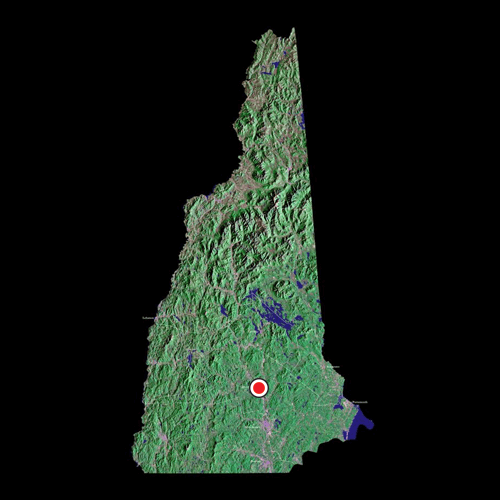
At least two NASA astronauts were born in New Hampshire.
Astronaut names: Alan Shepard and Lee M.E. Morin
New Hampshire will be in the path of totality, or prime viewing area, for the 2024 total solar eclipse!
Concord, New Hampshire is home to the McAuliffe-Shepard Discovery Center, which houses astronomy and Earth and space science exhibits. The McAuliffe-Shepard Discovery Center was named to honor Christa McAuliffe, NASA's first Teacher in Space, and Alan Shepard, one of the original seven Mercury astronauts.
Researchers and students at colleges and universities in New Hampshire support NASA discoveries. For example, a team of researchers from the University of New Hampshire made a discovery about magnetic fields when they analyzed information collected by NASA's Voyager 1 spacecraft.
Companies in New Hampshire have also supported NASA in many ways. For example, NASA partnered with Optical Solutions Inc., The Timken Company, and Appli-Tec, Inc. – all of which are located in New Hampshire – to help with the James Webb Space Telescope.
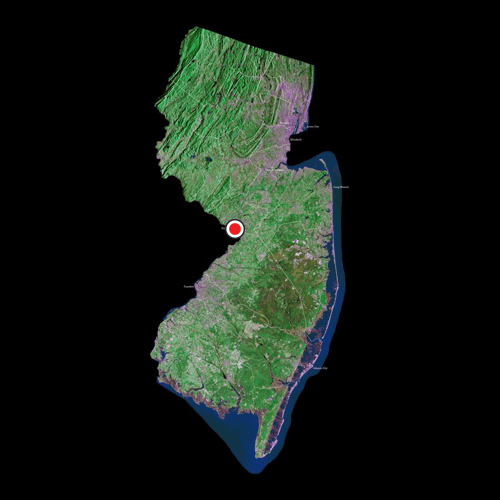
At least 12 NASA astronauts were born in New Jersey.
Astronaut names: Gregory Linteris, Buzz Aldrin, William Pailes, Wally Schirra, George D. Zamka, Garret Reisman, Rusty Schweickart, Mark E. Kelly, Scott J. Kelly, Mark L. Polansky, Kathryn Dwyer Sullivan and Kenneth Ham
Researchers and students at colleges and universities in New Jersey also support NASA discoveries. For example, researchers at Rutgers University in New Jersey work on a NASA Astrobiology Institute (NAI) research team to analyze how proteins evolve to become catalysts of life on Earth.
Also, Jeroen Tromp and Jessica Irving, both professors at Princeton University in New Jersey, are on NASA's InSight mission to Mars science team.
New Jersey companies help support NASA in many ways. For example, Messer LLC has provided gaseous and liquid helium to various NASA locations to support their experiments and discoveries.
Profiles of NASA People From This State:
Don Boroson, Systems Engineer
Amy Simon, Planetary Scientist
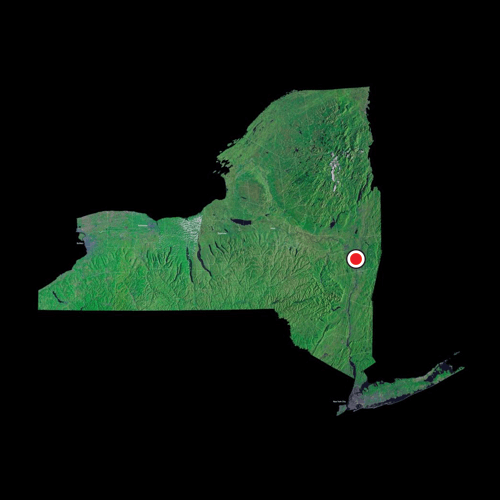
At least 29 NASA astronauts were born in New York.
Astronaut names: Nicole P. Stott, Kevin R. Kregel, Douglas H. Wheelock, Edward Gibson, James Pawelczyk, Robert L. Gibson, Eileen Collins, Douglas G. Hurley, William G. Gregory, Karol J. Bobko, Jay C. Buckey, Charles Camarda, Martin J. Fettman, Anna Lee Fisher, Ronald J. Grabe, Jeffrey A. Hoffman, Bruce E. Melnick, Robert A. Parker, Mario Runco, Jr., Jim Wetherbee, Michael Massimino, Michael P. Anderson, C. Gordon Fullerton, Mary L. Cleave, Lawrence J. DeLucas, Jeannette J. Epps, Steven Swanson, James C. Adamson and Ronald J. Garan, Jr.
New York, New York, is home to the NASA Goddard Institute for Space Studies (GISS), which specializes in climate research.
New York is set to be in the path of totality, or prime viewing area, for the total solar eclipse in 2024!
Researchers and students at colleges and universities in New York also support NASA discoveries. For example, a team of investigators from the City University of New York has worked with NASA's Jet Propulsion Laboratory (JPL) to collect data that will help support the mapping of wetlands across the Amazon river basin.
New York companies have helped to support NASA in many ways. For example, Imitec Inc. makes a high-temperature material that NASA uses on a range of objects such as aircraft engines and space propulsion systems.
Profiles of NASA People From This State:
Robert (Bob) Pappalardo, Project Scientist
Sarah Milkovich, Planetary Geologist and Science Systems Engineer

At least 21 NASA astronauts were born in Pennsylvania.
Astronaut names: Warren Hoburg, John-David F. Bartoe, Daniel W. Bursch, Paul J. Weitz, Theodore Freeman, Patricia Robertson, Andrew J. Feustel, Andrew M. Allen, James P. Bagian, Guion Bluford, Charles (Pete) Conrad, Jr., Christopher Ferguson, Scott J. Horowitz, Michael Fincke, Stephen Frick, Terry Jonathan Hart, James Irwin, Daniel Tani, Paul W. Richards, Byron Lichtenberg, Robert J. Cenker
Pennsylvania is in the path of totality, or prime viewing area, for the 2024 total solar eclipse!
Researchers and students at colleges and universities in Pennsylvania also support NASA discoveries. For example, NASA's Swift satellite was partly built and operated by teams at Pennsylvania State University. NASA's Swift satellite was designed to detect energy explosions, known as gamma-ray bursts, in distant galaxies.
Pennsylvania companies have helped to support NASA in many ways. For example, Pennsylvania company Air Products and Chemicals Inc. has provided liquid nitrogen and liquid oxygen to various NASA locations. NASA can use liquid nitrogen for tasks such as pressurization and liquid oxygen for certain types of rocket engines.
A space science professor from Edinboro University of Pennsylvania worked with NASA to create a book for visually impaired people to experience the Braille and tactile diagrams of the Moon.
Profiles of NASA People From This State:
Margaret W. ‘Hap’ Brennecke, Metallurgist and Welding Engineer
Bonnie Buratti, Planetary Scientist
Hal Levison, Scientist
Derrick Pitts, Chief Astronomer and NASA Solar System Ambassador

At least one NASA astronaut was born in Rhode Island.
Astronaut names: William F. Readdy
In 2016, NASA studied the hardwood forests of Rhode Island to research the outbreak of European gypsy moth caterpillars. NASA's Aqua and Terra satellites' Moderate Resolution Imaging Spectroradiometer (MODIS) sensor recorded the damage caused by the overpopulated pests.
Researchers and students at colleges and universities in Rhode Island support NASA discoveries. For example, affiliates of the University of Rhode Island assisted in NASA plankton research by constructing incubators to measure phytoplankton growth.
Rhode Island companies have helped to support NASA in many ways. For example, Evans Capacitor Co., Warehouse Cables and Yardney Technical Products, Inc. have all contributed to NASA's Orion spacecraft. The Orion program was designed to carry a NASA space crew farther in space than they have gone before.
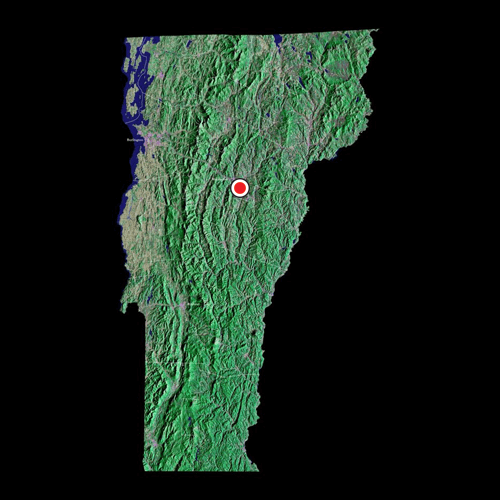
At least one NASA astronaut was born in Vermont.
Astronaut names: Duane Graveline
Vermont is set to be in the path of totality, or prime viewing area, for the total solar eclipse in 2024!
Researchers and students at colleges and universities in Vermont support NASA discoveries. For example, a team of scientists from the University of Vermont and a NASA colleague discovered a 2.7 million-year-old ancient tundra landscape beneath the Greenland Ice Sheet.

At least four NASA astronauts were born in Washington, D.C.
Astronaut names: B. Alvin Drew, Frederick D. Gregory, Lisa Nowak and Robert L. Stewart
NASA Headquarters is located in Washington, D.C.
The National Air and Space Museum is located in Washington, D.C.
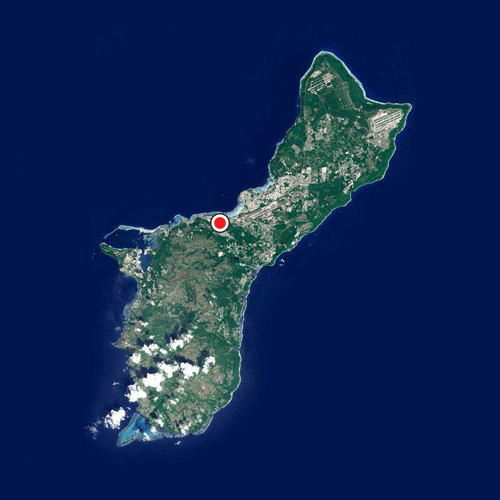
NASA operates a set of radio antennas on Guam called the Guam Remote Ground Terminal. These antennas help us communicate with spacecraft flying over the Indian Ocean. Without these antennas, some communications with satellites and the International Space Station might be lost.
In 2017, the University of Guam received funding from NASA to study coral reefs and reef fish in Micronesia.
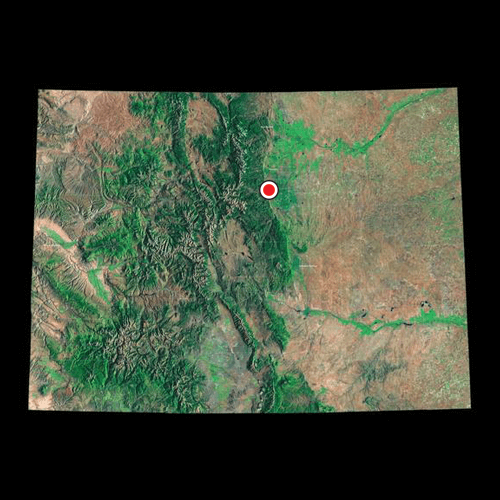
At least nine NASA astronauts were born in Colorado.
Astronaut names: Matthew Dominick, Jessica Watkins, Vance D. Brand, Scott Carpenter, Dorothy M. Metcalf-Lindenburger, Kent Rominger, Gerald P. Carr, John M. Lounge, John “Jack” Swigert, Stuart Roosa and Jack D. Fischer
Colorado is home to The Space Symposium, where representatives from NASA and companies and agencies from around the world come together to develop a plan for the future of space.
Researchers and students at colleges and universities in Colorado work with NASA on projects that will help us learn more about our universe. For example, the University of Colorado provides science and outreach resources for NASA's MAVEN mission, which explores the upper atmosphere of Mars.
Companies in Colorado have also supported NASA missions. For example, United Launch Services LLC of Colorado builds the rockets that launch many NASA spacecraft.
Profiles of NASA People From This State:
Kathleen Mandt, Planetary Scientist
Vicky Hamilton, Planetary Geologist, Southwest Research Institute
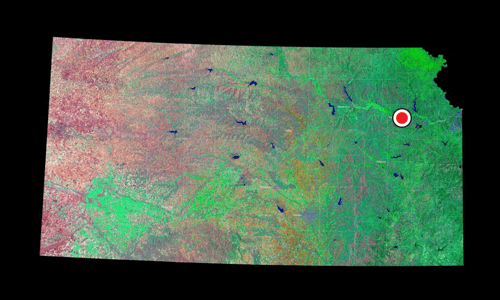
At least four NASA astronauts were born in Kansas.
Astronaut names: Tyler N. Hague, Joseph Henry Engle, Steven Hawley and Ronald Evans
Kansas was in the path of totality, or prime viewing area, for the total solar eclipse in 2017.
Kansas is home to the Center for Remote Sensing of Ice Sheets (CReSIS) which specializes in building radars for researchers studying snow and ice. For example, they worked with NASA to create radars that are used to study how snow accumulates on the Antarctic ice sheet.
NASA researchers study the skies in Kansas to understand how summer storm systems form in the United States. The Plains Elevated Convection at Night (PECAN) project began its research at the Salina Regional Airport in Salina, Kansas.
Researchers and students at colleges and universities in Kansas support many NASA discoveries. For example, the University of Kansas worked with NASA to develop a radar system for analyzing glaciers.
Companies in Kansas have also supported NASA in many ways. For example, NASA partnered with Park Aerospace Technologies Corp., a company in Newton, Kansas, to help with the James Webb Space Telescope.
Profiles of NASA People From This State:
Phil Christensen, Planetary Geologist
Michael Staab, Mission Operations Engineer
Nagin Cox, Systems Engineer
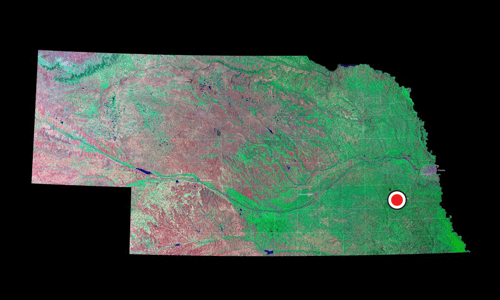
At least one NASA astronaut was born in Nebraska.
Astronaut name: Clayton Anderson
Nebraska was in the path of totality, or prime viewing area, for the total solar eclipse in 2017.
Researchers and students at colleges and universities in Nebraska work with NASA on projects that will help us learn more about our universe. For example, a team from the University of Nebraska-Lincoln is working to develop a new detector to measure particles from the Sun, called the Detector for the Analysis of Solar Neutrons (DANSON).
The University of Nebraska-Lincoln is also home to the National Drought Mitigation Center. This center supports NASA efforts by distributing NASA’s satellite-based, weekly global maps and U.S. forecasts of soil moisture and groundwater wetness conditions online.
Profiles of NASA People From This State:
Melissa McGrath, Chief Scientist

At least three NASA astronauts were born in New Mexico.
Astronaut names: Sidney M. Gutierrez, F. Drew Gaffney and Harrison Schmitt
New Mexico is home to the White Sands Test Facility, where NASA tests and evaluates potentially hazardous materials, space flight components and rocket propulsion systems.
The Los Alamos National Laboratory in New Mexico assisted in building and operating NASA's Swift satellite, which was designed to detect very distant cosmic bursts.
NASA's White Sands Test Facility in Las Cruces, New Mexico is used to test new materials and rocket systems for NASA missions.
NASA launches scientific balloons from Fort Sumner, New Mexico, along with several other locations around the world. The NASA Balloon Program uses high-altitude scientific balloons to study Earth, the solar system and the universe.
Researchers and students at colleges and universities in New Mexico support many NASA projects. For example, the University of New Mexico (UNM) was selected to manage a NASA robotics competition called the Swarmathon challenge.
Companies in New Mexico have also supported many NASA missions. For example, NASA partnered with ATA Aerospace, Joint Venture of Albuquerque, New Mexico to assist with mechanical engineering and related services at the Goddard Space Flight Center in Maryland.
Profiles of NASA People From This State:
Sophia Sanchez-Maes, Summer Research Student
Karen Rodriguez, Project Manager

At least two NASA astronauts were born in North Dakota.
Astronaut names: Richard Hieb and James Buchli
Researchers and students at colleges and universities in North Dakota work with NASA on projects that will help us learn more about our universe. For example, students and faculty at the University of North Dakota, Grand Forks built the Agricultural Camera (AgCam) that was installed on the International Space Station. AgCam allows students to work closely with NASA engineers and station astronauts to monitor farms in the northern Great Plains and Rocky Mountain regions.
NASA also partnered with engineers from the University of North Dakota to test prototype spacesuits at NASA's Kennedy Space Center.
Profiles of NASA People From This State:
John McCormick, Integration and Test Manager

At least five NASA astronauts were born in Oklahoma.
Astronaut names: Owen K. Garriott, William R. Pogue, Gordon Cooper, Thomas Patten Stafford and John Herrington
Oklahoma is set to be in the path of totality, or prime viewing area, for the total solar eclipse in 2024.
On November 15, 1953, an amateur astronomer in Oklahoma observed and photographed a lunar flash, making him the first and only human to witness and document an asteroid-sized body colliding with the Moon's exterior. This photograph provided NASA with a tremendous starting point for further collision research.
Researchers and students at colleges and universities in Oklahoma support many NASA projects. For example, NASA partnered with the University of Oklahoma, Norman to develop technology that monitors plant health and vegetation stress, as well as the processes that influence the carbon cycle and our atmosphere. The project is called the Geostationary Carbon Cycle Observatory, or GeoCarb.
Companies in Oklahoma have also supported many NASA discoveries. For example, NASA partnered with Benham Constructors LLC of Oklahoma City to design, build and commission testing to support the development of the Orion crew exploration vehicle.
Profiles of NASA People From This State:
Leslie Bebout, Microbial Ecologist

At least two NASA astronauts were born in South Dakota.
Astronaut names: Michael E. Fossum and Charles D. Gemar
South Dakota is home to the Landsat Ground Station which is located at the U.S. Geological Survey (USGS) Earth Resources and Science Center (EROS) in Sioux Falls. NASA uses this center to receive and collect all images and information from the Landsat satellite.
In 1992, what is believed to be the most complete and well-preserved T-rex skull was discovered on a ranch in South Dakota. This T-rex skull was then examined by NASA scientists using high-tech x-ray equipment.
Researchers and students at colleges and universities in South Dakota support many NASA projects. For example, NASA partnered with the South Dakota School of Mines & Technology to develop an Experimental Program to Stimulate Competitive Research (NASA EPSCoR) which focuses on lithium-ion battery research for space applications.
Profiles of NASA People From This State:
Heather Doyle, Public Engagement Networks Supervisor
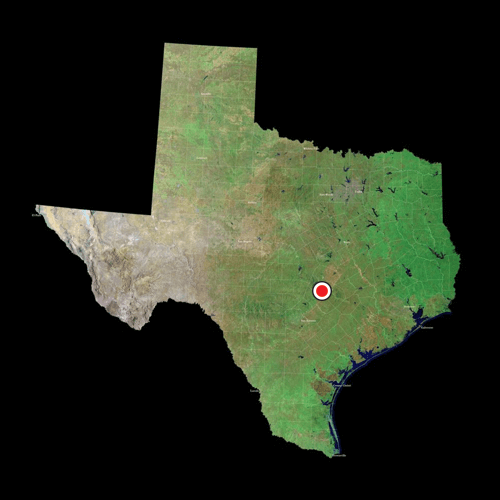
At least 24 NASA astronauts were born in Texas.
Astronaut names: Loral O’Hara, Rick Husband, Kenneth Cockrell, Paul Lockhart, Timothy L. Kopra, Robert Crippen, Jeffrey Ashby, William Frederick Fisher, Donald Holmquest, Elliot See, Patrick G. Forrester, John M. Fabian, Edgar Mitchell, Shannon Walker, Robert S. Kimbrough, Millie Hughes-Fulford, John Oliver Creighton, Edward Givens, David Scott, John E. Blaha, Ed White, Bernard A. Harris Jr., Alan Bean and Richard Mullane
NASA's Johnson Space Center is located in Houston, Texas.
Texas is set to be in the path of totality, or prime viewing area, for the total solar eclipse in 2024.
Researchers and students at colleges and universities in Texas work on many NASA projects. For example, NASA Stennis Space Center collaborated with a team at Texas A&M University in Galveston to develop a web app that can alert coastal residents when bothersome sargassum seaweed may end up on beaches.
Companies in Texas have also supported many NASA in many ways. For example, NASA partnered with Blue Origin, LLC, a company in Van Horn, Texas, to help to support programs such as NASA's suborbital spacecraft.
Profiles of NASA People From This State:
Glenn Light, Director, Department of Sensor Systems and Nondestructive Evaluation
Mamta Patel Nagaraja, Science Program Manager
Craig Tooley, Project Manager
Bekah Sosland Siegfriedt, Flight Director
Keri Bean, Science Planner
Troy Hudson, Instrument System Engineer
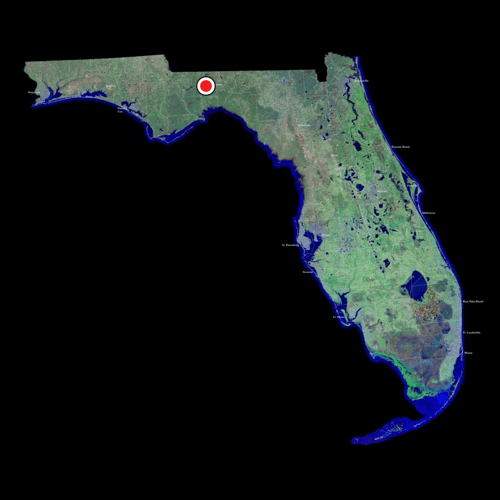
At least nine NASA astronauts were born in Florida.
Astronaut names: Dr. Francisco "Frank" Rubio, Jan Davis, Wendy B. Lawrence, Richard N. Richards, Norman Thagard, Eric A. Boe, William B. Lenoir, Bill Nelson, Winston E. Scott and Samuel T. Durrance
Many NASA missions, such as the Mars Science Laboratory mission carrying the Curiosity rover, are launched from the launch pads at Cape Canaveral, Florida.
Florida is home to the Kennedy Space Center Visitor Complex. There, visitors can learn about the work at Kennedy Space Center and get an up-close view of the space shuttle Atlantis, rockets and more.
Because Cape Canaveral and the surrounding areas have so many connections to NASA and space exploration, this region of Florida is called the “Space Coast.”
Researchers and students at colleges and universities in Florida support NASA discoveries. For example, the University of Central Florida is a partner in NASA's GOLD mission, which studies a layer of Earth's atmosphere called the ionosphere.
Florida companies also support NASA discoveries. For example, a Florida company called RS&H Inc. works with NASA to design and modify the mobile launcher at Kennedy Space Center.
Profiles of NASA People From This State:
Rania Ghatas, Machine Systems Research Engineer
Morgan Cable, Research Scientist
Angela Melito, Deputy Chief Safety and Mission Assurance Officer

At least six NASA astronauts were born in Georgia.
Astronaut names: Thomas J. Hennen, Roy D. Bridges, Jr., Susan Still Kilrain, David M. Walker, Sonny Carter and L. Blaine Hammond
Georgia was in the path of totality, or prime viewing area, for the 2017 total solar eclipse!
Researchers and students at colleges and universities in Georgia support NASA discoveries. For example, a team from the Georgia Institute of Technology used data from NASA's Dawn spacecraft to find water ice on the dwarf planet Ceres—the largest object in the asteroid belt.
Georgia companies have helped to support many NASA missions. For example, NASA uses special airplanes from a Georgia company called Phoenix Air Group Inc. for some of its Earth science missions.
Profiles of NASA People From This State:
Lewis Wooten, Director of Missions Operations Laboratory
Wanda Harding, Senior Missions Manager

Students from Puerto Rico won first place in both the high school and college divisions of the 2017 Human Exploration Rover Challenge.
Researchers and students at colleges and universities in Puerto Rico support NASA discoveries. For example, the University of Puerto Rico – Rio Piedras was the home of the Center for Advanced Nanoscale Materials (CANM.) This center united students and researchers to work on research projects relevant to NASA.
Profiles of NASA People From Puerto Rico:
Eduardo Nicolau, Postdoctoral Fellow
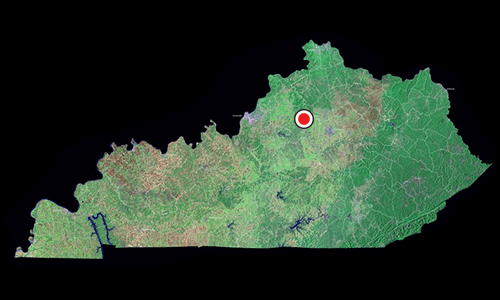
At least two NASA astronauts were born in Kentucky.
Astronaut names: Randolph Bresnik and Terrence Wilcutt
Kentucky is one of only three states that happen to be in the path of totality, or prime viewing area, for both the 2017 and 2024 solar eclipses!
Researchers and students at colleges and universities in Kentucky support many NASA missions. For example, researchers from the University of Kentucky are working on a technology that could improve how we track the movement of satellites.
Kentucky companies have also helped support many NASA missions. For example, American Synthetic Rubber Company, a company in Kentucky, has contributed to several NASA programs developing launch vehicles.
Profiles of NASA People From This State:
Tracy Drain, Flight Systems Engineer
Paul Spudis, Lunar Geologist
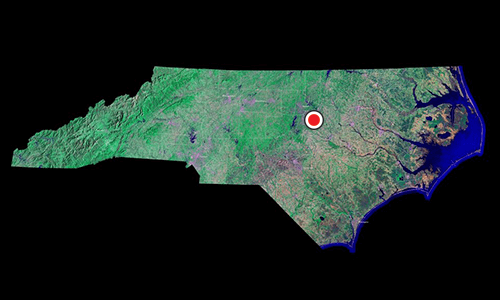
At least ten NASA astronauts were born in North Carolina.
Astronaut names: Bob Hines, Michael J. Smith, Charles Moss Duke, Jr., Susan J. Helms, Curtis Brown, William E. Thornton, Ellen S. Baker, William S. McArthur, Charles E. Brady, Jr. and Thomas Marshburn
North Carolina was in the path of totality, or prime viewing area, for the 2017 solar eclipse!
Researchers and students at colleges and universities in North Carolina support many NASA discoveries. For example, researchers from the University of North Carolina at Chapel Hill are using NASA technologies to help us understand how humans interact with the environment.
North Carolina companies have also helped to support NASA in many ways. For example, the Charlotte Douglas International Airport in North Carolina is collaborating with NASA and other partners on ways to help make airplane traffic at airports more efficient.
Profiles of NASA People From This State:
Lynnae Quick, Planetary Geophysicist

At least five NASA astronauts were born in South Carolina.
Astronaut names: Catherine Coleman, Frank L. Culbertson, Jr., Charles Bolden, John Casper and Ronald McNair
South Carolina was in the path of totality, or prime viewing area, for the 2017 total solar eclipse!
Researchers and students at colleges and universities in South Carolina support NASA in many ways. For example, students from the College of Charleston participated in a collaborative NASA project to launch weather balloons to collect data during the 2017 total solar eclipse.
South Carolina companies have also helped support many NASA discoveries. For example, more than 12 companies in South Carolina have contributed to the Orion Program, which plans to one day take humans farther in the solar system than we've gone before.
Profiles of NASA People From This State:
Vanessa Wyche, Deputy Director of NASA's Johnson Space Center
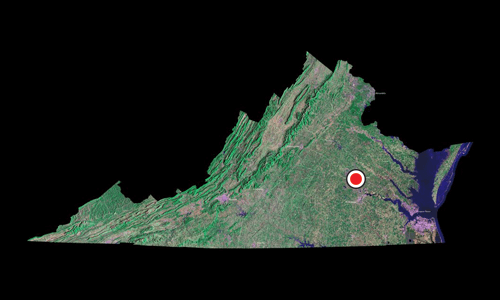
At least 10 NASA astronauts were born in Virginia.
Astronaut names: Guy Gardner, David McDowell Brown, Mark T. Vande Hei, William Oefelein, John L. Phillips, Robert Satcher, Leland D. Melvin, Peter Wisoff, Ken Bowersox and Joe F. Edwards, Jr
Two NASA centers are located in Virginia: NASA's Langley Research Center and the Wallops Flight Facility.
The retired space shuttle Discovery is on view for visitors at the Smithsonian National Air and Space Museum's Udvar-Hazy Center in Chantilly, Virginia.
NASA's Wallops Flight Facility is also home one of the antennas of the Near Earth Network. This network has antennas all over the world that help us communicate with satellites that are orbiting Earth.
Researchers and students at colleges and universities in Virginia support NASA in many ways. For example, the Virginia Cubesat Constellation mission is a collaboration between students from four universities in Virginia. The mission will use three small satellites to measure properties of Earth's atmosphere.
Virginia companies have also helped support many NASA missions. For example, a Virginia company called Analytical Mechanics Associates, Inc. supports the scientific research and engineering design for several NASA missions.
Profiles of NASA People From This State:
Tricia Talbert, Senior Multimedia Designer
Bob Anderson, Geologist
Mary Jackson, NASA engineer in the early days of space flight
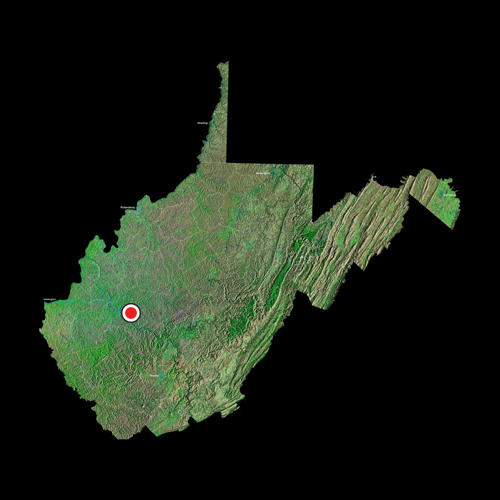
At least two NASA astronauts were born in West Virginia.
Astronaut names: Andrew R. Morgan and Jon McBride
Fairmont, West Virginia is home to NASA's Independent Verification and Validation Facility. This facility works on projects relating to safety and reliability of software used on NASA missions.
Researchers and students at colleges and universities in West Virginia support NASA in many ways. For example, engineering students from West Virginia University partnered with NASA to create a very small satellite, called a CubeSat. The CubeSat, named Simulation to Flight 1, will record data from its orbit around Earth.
West Virginia companies have also helped to support NASA. For example, Allegheny Science and Technology provides communications support to NASA's Independent Verification and Validation Facility.
Profiles of NASA People From This State:
Katherine Johnson, NASA mathematician and "human computer" in the early days of space flight

At least six NASA astronauts were born in Alabama.
Astronaut names: Henry Hartsfield, James Voss, Mae Jemison, Kathryn P. Hire, Clifton Williams and Kathryn C. Thornton
NASA tests rocket and space flight technologies at Marshall Space Flight Center in Huntsville, Alabama.
Huntsville, Alabama is home to NASA's U.S. Space and Rocket Center and Space Camp. There, visitors can learn about the work at Marshall Space Flight Center and get an up-close view of a space shuttle, rockets and more.
NASA's Marshall Space Flight Center is also one of the control centers for the International Space Station. There, flight controllers work with astronauts and scientists all around the world to complete science research onboard the ISS.
Two NASA competitions for students also take place in Huntsville: the NASA Human Exploration Rover Challenge, which encourages students to develop new technologies for future missions to other worlds, and the NASA Student Launch Challenge, in which students design, build, and launch their own rockets.
NASA's Meteoroid Environment Office is located at NASA's Marshall Space Flight Center in Alabama. This office works to understand if and how meteoroids--pieces of rock in space--could impact or damage a spacecraft.
Researchers and students at colleges and universities in Alabama support NASA discoveries. For example, teams from Auburn University and the University of Alabama collaborated with NASA to develop technologies for NASA missions.
Alabama companies also help to support NASA discoveries. For example, Dynetics, Inc is making a part that will help connect NASA's Space Launch System rocket with its Orion spacecraft.
Profiles of NASA People From This State:
Hunter Waite, Program Director, Space Science and Engineering Division

At least two NASA astronauts were born in Arkansas.
Astronaut names: Richard O. Covey and Scott E. Parazynski
Arkansas will be in the path of totality, or prime viewing area, for the 2024 total solar eclipse!
Arkansas companies also support NASA discoveries. For example, a company called Ozark Integrated Circuits is working on instruments that would be able to operate in extreme heat on the surface of Venus.
Profiles of NASA People From This State:
Ralph Carruth, Director, Marshall Space Flight Center

At least eight NASA astronauts were born in Iowa.
Astronaut names: Laurel Clark, James M. Kelly, George Nelson, David C. Hilmers, Walter Cunningham, Loren Shriver, Peggy Whitson and Raja Chari
Iowa was in the path of totality, or prime viewing area, for the 2017 total solar eclipse!
The Van Allen Belts—regions of radiation just beyond Earth's atmosphere—were named after James Van Allen, a scientist from the University of Iowa. The radiation belts are created when particles from the Sun get trapped in Earth's magnetic field. Van Allen discovered the radiation belts by studying information collected by America's first satellite, Explorer 1, in 1958.
Researchers and students at colleges and universities in Iowa support NASA discoveries. For example, a team led by the University of Iowa is leading the HaloSat mission, which will study X-ray emissions in our galaxy.
Iowa companies also support NASA discoveries. For example, an Iowa company called VSI Aerospace Inc. worked with NASA to create tools that will help NASA to design future spacecraft.
Profiles of NASA People From This State:
James Green, NASA Chief Scientist
Mary Beth Koelbl, Deputy Director of Marshall's Engineering Directorate

At least two NASA astronauts were born in Louisiana.
Astronaut names: Dominic L. Pudwill Gorie and James D. Halsell
New Orleans, Louisiana is home to the Michoud Assembly Facility, a facility that makes and assembles parts for many NASA rockets and spacecraft.
NASA is collecting information about the growing Mississippi River deltas in Louisiana to help scientists better understand how coastal wetlands will respond to global sea level rise.
Researchers and students at colleges and universities in Louisiana support NASA discoveries. For example, a team from the University of Louisiana, Lafayette has worked with NASA to prepare and engineer small satellites, called CubeSats.
Profiles of NASA People From This State:
Mark Boudreaux, Project Manager
Alan Stern, Scientist
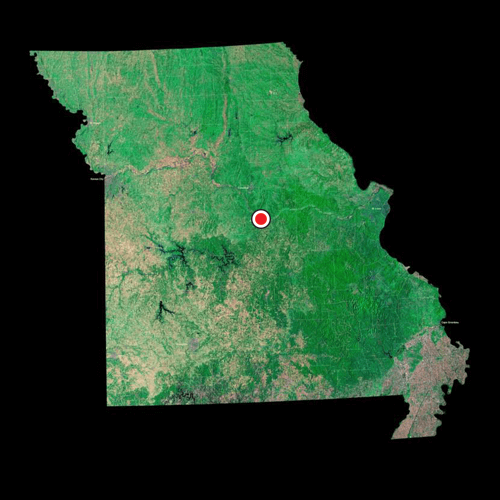
At least six NASA astronauts were born in Missouri.
Astronaut names: Linda M. Godwin, Janet L. Kavandi, Robert L. Behnken, Michael S. Hopkins, Thomas Akers and Robert C. Springer
Missouri is one of only three states that happen to be in the path of totality, or prime viewing area, for both the 2017 and 2024 total solar eclipses!
Researchers and students at colleges and universities in Missouri support NASA discoveries. For example, Saint Louis University and Jefferson College in Missouri collaborated with NASA on a project to launch weather balloons during the 2017 solar eclipse. The project aimed to help scientists learn more about Earth's upper atmosphere.
Missouri companies also support NASA discoveries. For example, a Saint Louis division of the company Boeing is working with NASA to create a faster and more efficient computer chip for future space missions.
Profiles of NASA People From This State:
Mona Kessel, Program Scientist, Heliophysics Division
Dorothy Vaughan, NASA mathematician and "human computer" in the early days of space flight

At least seven NASA astronauts were born in Tennessee.
Astronaut names: Tamara E. Jernigan, Roger K. Crouch, Michael A. Baker, John S. Bull, Margaret Rhea Seddon, Barry E. Wilmore and William Shepherd
Tennessee is one of only three states that happen to be in the path of totality, or prime viewing area, for both the 2017 and 2024 total solar eclipses!
Researchers and students at colleges and universities in Tennessee support NASA discoveries. For example, University of Tennessee, Knoxville helped NASA with research into designing a more aerodynamic airplane wing that could help future aircraft be more fuel-efficient.
Tennessee companies have helped to support NASA in many ways. For example, Security Walls, LLC, provides security and protective services at NASA's Marshall Space Flight Center.
Profiles of NASA People From This State:
Charles "Karl" Hibbitts, Planetary Scientist
Nancy Roman, Astronomer
Amy Lovell, Professor

At least three NASA astronauts were born in Mississippi.
Astronaut names: Fred Haise, Richard H. Truly and Donald H. Peterson
Mississippi is home to NASA's Stennis Space Center. This facility is where NASA tests rocket engines, including one of the engines for NASA's upcoming Space Launch System. The Space Launch System is being developed for future deep space exploration.
The Infinity Science Center in Pearlington, Mississippi serves as the visitor center for NASA's Stennis Space Center. There, visitors can learn more about past, present and future NASA missions and discoveries.
Stennis Space Center is technically its own city in Mississippi. About 40 federal, state, academic and private technology-based organizations come together to create the unique federal city.
Profiles of NASA People From This State:
Susan Niebur, Astrophysicist
Information sources:
Information about state founding and population estimates were taken from the U.S. Census Student State Facts website. Population numbers included are from 2017 estimates, when available. The last available population number for Guam was from the 2010 census.
Information about NASA astronauts born in each state was taken from the NASA Astronaut Factbook. For biographies of each astronaut, visit the NASA Astronaut homepage.
Know some fun NASA or space facts about your state that you don't see included here? If you can find validation for the fact on a NASA.gov website, feel free to send your suggestions (along with NASA.gov URL) to spaceplaceconnect@jpl.nasa.gov
Interested in learning more? Find out how data from NASA's fleet of Earth-observing satellites help tackle our country's biggest challenges at Space for U.S. or visit NASA Home & City to find out ways space exploration and research impact your daily life.
This project was funded by NASA's Science Mission Directorate.
The Solar System Ambassadors, Museum & Informal Education Alliance and Night Sky Network are NASA programs that work with motivated volunteers across the nation to share the latest science and discoveries of NASA's missions through a variety of events that inspire their communities. To find events or volunteers in your area, check out these maps from the NASA Solar System Ambassadors, Night Sky Network and the Museum & Informal Education Alliance.
Welcome to NASA in the 50 States!
![]()
![]()
![]()
![]()
![]()
Did you know that all 50 states are helping NASA explore space? It's true!
Click your state on the map to see how it's been important to the study of space and Earth science. Explore other states to learn some fun facts, too! To get started, see if you can find:
1. Which state has the most NASA centers?
2. Which four states fall in the path of totality for both the 2017 and 2024 total solar eclipses?
3. Which state would be a good place to spot the aurora borealis (also known as northern lights)?
Know some fun NASA or space facts about your state that you don't see included here? Send your suggestions to spaceplaceconnect@jpl.nasa.gov
Congratulations!
![]()
![]()
![]()
![]()
![]()
You have learned many space facts about the United States!
To learn more about space and Earth science, check out the games, videos and articles on NASA Space Place.